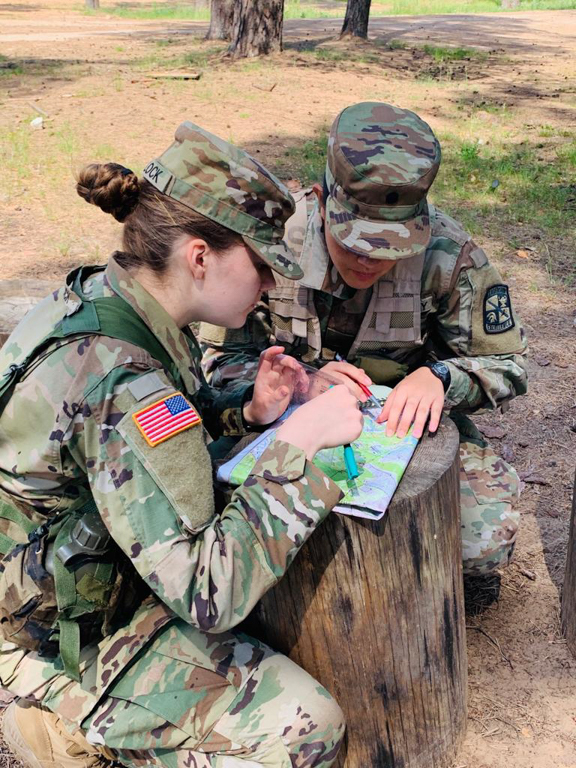
THE PATH TO SUCCESS: Army civilians have many potential routes to professional achievement, and the IDP can help them choose the best path to reach their goals. (Graphic by Getty Images)
Individual Development Plans help employees plan their career path.
by Jacqueline M. Hames
“What do you want to be when you grow up?” People are asked that question as children countless times. Engineer. Actor. Race car driver. Firefighter. The list is endless and ever changing. For adults who don’t become firefighters or actors, the question evolves into “Where do you see yourself in a year? In five?”
An individual development plan (IDP) can help to answer that question. An IDP is a career and personal development tool for employees that will help them reach short- and long-term career goals and improve current job performance, according to the Office of Personnel Management. Several agencies within DOD and elsewhere in the government have implemented IDPs to assist employees in their development, and the Director of Acquisition Career Management (DACM) Office is no exception—all Army Acquisition Workforce (AAW) members are required to maintain a five-year IDP.

A SEA OF IDEAS: When planning for the future, it’s helpful to set both long-term and short-term goals. The IDP is a tool that helps Army civilians develop so-called SMART goals for their careers, spanning a five-year period. (Image by Getty Images)
THE NITTY-GRITTY
During a discussion with the DACM’s acquisition career managers, Army AL&T learned some helpful information.
The IDP is a tool that enables employees to plan, discuss and manage their continuing education, training or special experience needed to meet the certification requirements of their position. For those civilian employees whose positions fall under the Defense Acquisition Workforce Improvement Act, the IDP is a requirement, as is its regular maintenance, because training never stops. The IDP outlines what employees want to do with their careers in the future and how they would like to achieve those goals. Employees should keep in mind that the IDP is not the same as a performance evaluation. A performance evaluation is for the past, while the IDP is for the future—career planning. The IDP supports the performance evaluation because you’re saying: “Here’s what I did…,” or “Here’s what I am planning to do within the rating period.” The IDP complements the performance evaluation.
The DACM Office’s acquisition career managers emphasized that an acquisition professional’s IDP is not the same as a non-acquisition employee’s, which is accessed through the Army Career Tracker—another career management website that can house an IDP. An Army acquisition IDP is an online document accessed via the Career Acquisition Personnel and Position Management Information System (CAPPMIS). The main difference between an acquisition IDP and others is that the acquisition IDP is tailored to the AAW and encapsulates an employee’s current professional acquisition and career status.
For the AAW, the IDP is a one-stop tool containing several categories essential to acquisition career development, management and communication, and engagement with supervisors. Under the IDP’s home page, there is a handy electronic dashboard summarizing an acquisition employee’s status across multiple areas of responsibility. The planning and history tabs are for monitoring training, professional acquisition and leadership activities, and for tracking continuous learning points (CLPs) earned. The supervisor’s tool allows supervisors to add employees under their hierarchy, approve training and professional activities requests, award CLPs and manage AAW members’ positions and career progression. The objectives tab is for recording career objectives and goals essential to career development and management.

MAPPING THE FUTURE: It’s just like charting any other course—Army Acquisition Workforce members should use their individual development plans to determine how to reach their professional goals. Army Reserve Officer Training Corps cadets Chole Bullock, left, from the University of Vermont, and TeAta Gutierrez, right, from Azusa Pacific University, participate in a land navigation course at Camp Adazi, Latvia, on June 10, 2019. (Photo by U.S. Army Cadet Command Public Affairs)
MAKING IT WORK
Acquisition and non-acquisition supervisors of acquisition professionals must review IDPs with their employees every 180 days to identify other training, education and experience opportunities available within the five-year timeframe. The review should cover the current objectives. Objectives are broken into two parts that span a five-year period: short- and long-term objectives. The DACM Office recommends writing so-called SMART goals to help employees achieve their objectives in increments—things that are specific, measurable, attainable, relevant and timely. Employees should ask themselves: “Where do I see my career going?” and “What steps do I need to take to get there?” After a discussion with the supervisor, employees input short- and long-term objectives and submit them for approval. The IDP is only valid after supervisory approval.
The career managers stressed that—from the initial counseling of a new employee to the 180-day updates—an employee must ensure their supervisor has added them to the supervisor module in CAPPMIS. If there’s no supervisor listed, or if an acquisition employee’s IDP objectives lapse, the IDP is, in effect, useless.
While it isn’t required, employees can use the DACM Office’s notional acquisition career models for objective and goal inspiration if they’re stuck. For those, go to https://asc.army.mil/web/career-development/civilian/career-models/.
CONCLUSION
The acquisition IDP, similar to other versions of the IDP, helps plan future career moves and keeps employees on track for career growth and development. The best thing about the acquisition IDP is that it is a comprehensive and flexible career development tool that can help employees achieve their professional ambitions.
So whether an employee is new to the acquisition field or has been here in the trenches for a while, remember—employees have the power to change their career trajectories. Just adjust the IDP.

INFORMATION ZONE: For Army acquisition personnel, the IDP is accessed through CAPPMIS. The acquisition IDP is specifically tailored to members of the Army Acquisition Workforce and details the employee’s current career status. (Image courtesy of the author)
For more information on how to use the IDP, contact your designated acquisition career manager through CAPPMIS at https://go.usa.gov/xASyu (CAC required).
For more information on how to manage an acquisition career, read the DACM’s quick reference guide at https://go.usa.gov/xASV3.
JACQUELINE M. HAMES is an editor with Army AL&T magazine. She holds a B.A. in creative writing from Christopher Newport University. She has more than 10 years of experience writing and editing news and feature articles for publication.
Read the full article in the Spring 2021 issue of Army AL&T magazine.
Subscribe to Army AL&T – the premier source of Army acquisition news and information.
![]()







